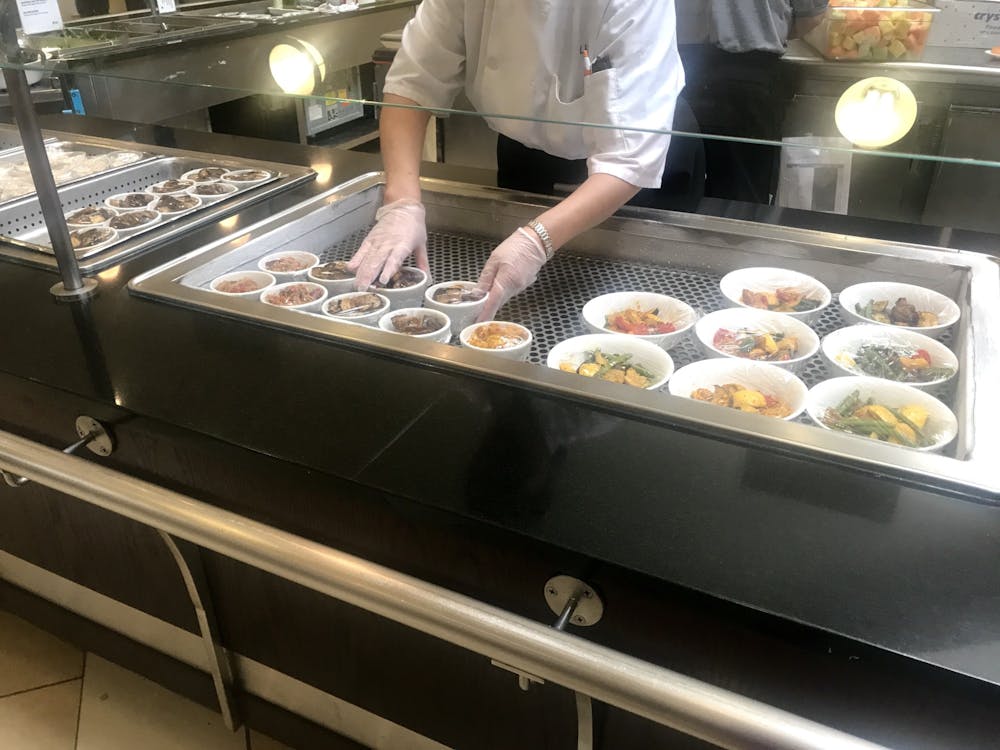For much of the past year, COVID-19 has taken all our attention, wresting focus away from urgent environmental problems — even those that the pandemic has exacerbated. Central among them is the overconsumption of single-use plastics.
As students and citizens, we must protect our planet. That starts with reducing our reliance on single-use plastics.
Ever since the initial outbreak of COVID-19, plastic use has spiked. In order to meet the surge of demand, factories around the world have been straining to produce single-use masks, gloves, and personal protective equipment (PPE) — all made from plastic that takes hundreds of years to decompose. Safety protocols instituted during the pandemic to reduce transmission often involve large usage of plastic.
On the commercial side, shoppers are no longer encouraged to carry their own reusable shopping bags. Instead, they must use free store-provided plastic bags that cost 10¢ before the virus. Corporations like Starbucks, which had recently given in to the call to phase out plastic cups, banned the practice of filling drinks in reusable cups and returned to plastic/paper cups.
As many universities plan to welcome more students back to campus in the spring, single-use plastic consumption will surge on college campuses as well. Here’s a simple calculation. The nearly 300 students currently living on campus receive three buffet-style meals a day. Each is packed in a container made of polystyrene, a plastic that falls under the category of “recyclable 6” and a material “difficult to recycle.”
The 12-week semester lasts 84 days. If everyone eats three such meals a day, that tiny student population will throw away tens of thousands of these containers and eating utensils, after only a single use.
Now think about the tens of thousands of schools and universities in the United States. Although each plastic container may weigh no more than several grams, in total, campus living could contribute thousands of tons of single-use plastic waste just in one day. And until a successful vaccine emerges and life returns back to normal enough for people to feel safe using communal eating utensils, plastic will remain the cheapest and most convenient material to use.
Since 1950, only 9 percent of all plastic used has been recycled. While products made of plastics are disposable, the substance remains forever in the environment. These used plastics have two destinations — underground or in the ocean. Ocean plastics pollution is projected to triple in the next two decades. The consequence? Picture plastic the size of Texas and California combined flowing along the surface of the Pacific Ocean. Picture that turtle, writhing and bleeding heavily as an animal rescue volunteer pulls out the plastic straw stuck up its nose, or a northern Norwegian reindeer, murdered by the plastic fishing nets that entangled its antlers.

For the most part, the University, as a leader in environmental awareness, is doing a commendable job. Among campus meals, hot cups and soup cups are “made from fully renewable resources and certified by Biodegradable Products Institute (BPI)” University Media Relations Specialist Ayana Gibbs explained.
She added, “[By] using Ecotainer products, we are decreasing dependencies on petrochemicals and reducing waste sent to landfills. The Royal Paper Company cold cups are manufactured poly-coated paper cups, using food-grade ink. The Placon salad bowl is produced with Ecostar™ plastic, which is food-grade post-consumer recycled PET, from recyclable beverage bottles.”
Although these products are better than normal plastic, keeping dining sets that are entirely single-use plastic will still generate large amounts of waste.
Removing plastic from your life all at once may be difficult, but it’s not impossible. There are always opportunities for you to save plastic. In fact, an opportunity presented itself when President Christopher Eisgruber ’83 announced the possibility of “welcom[ing] back significantly more undergraduates in the spring” last month.

Every additional student who returns to campus in the spring corresponds to hundreds of single-use dining sets. What if we were to use our own?
Kelsey Ji is a first-year from Cambridge, Mass. She can be reached at xingej@princeton.edu.








